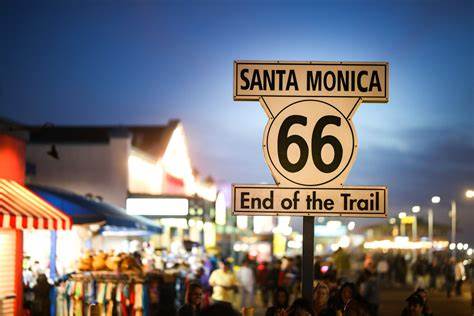Ride.
The trip of a lifetime!
Two week ride on route 66.
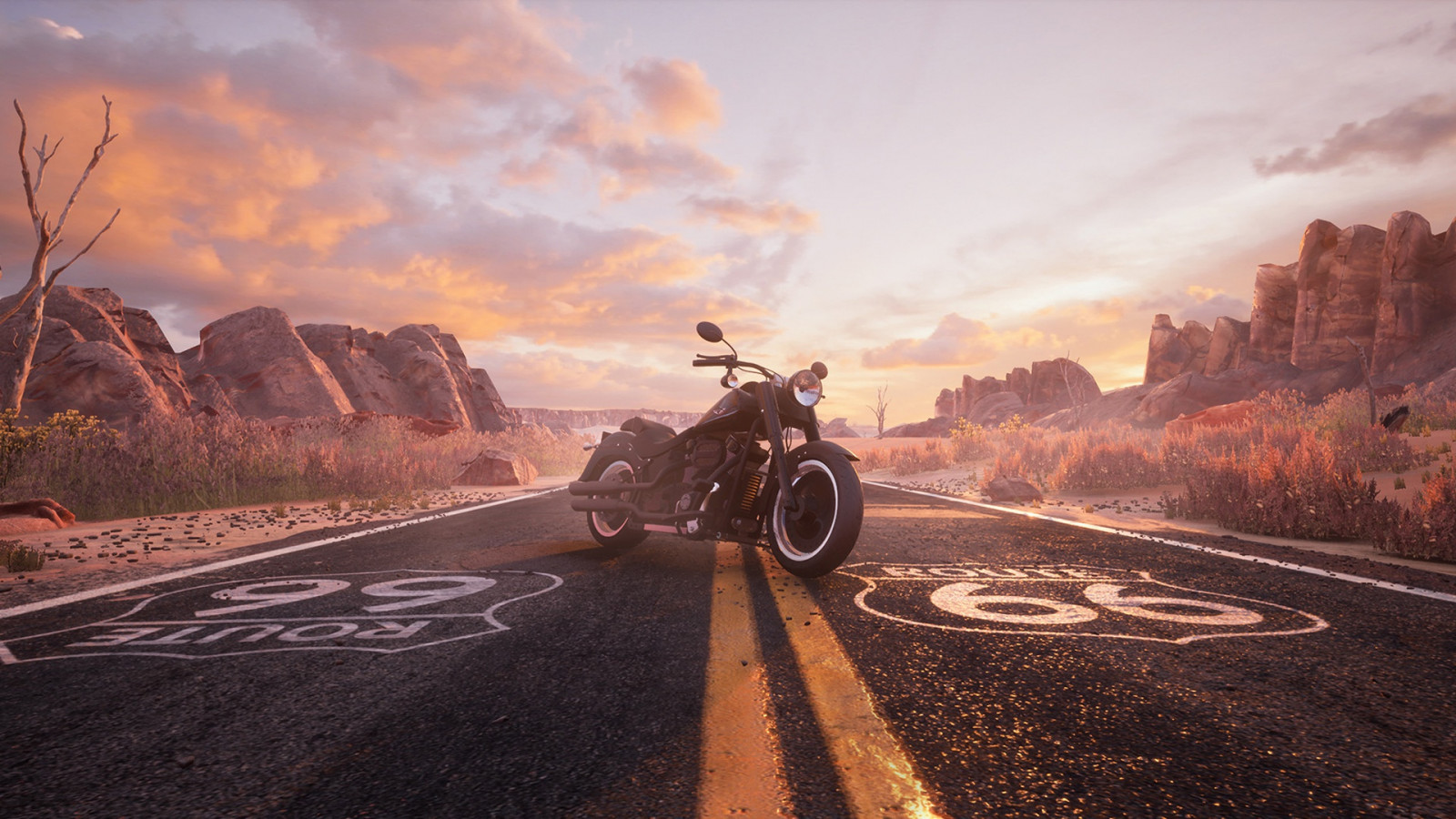
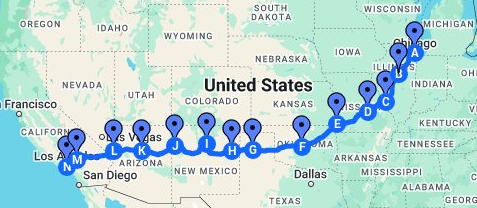
- Miles: 2700
- Start: Chicago
- End: Los Angeles
- Time: two weeks
- Suitability: A2 or above
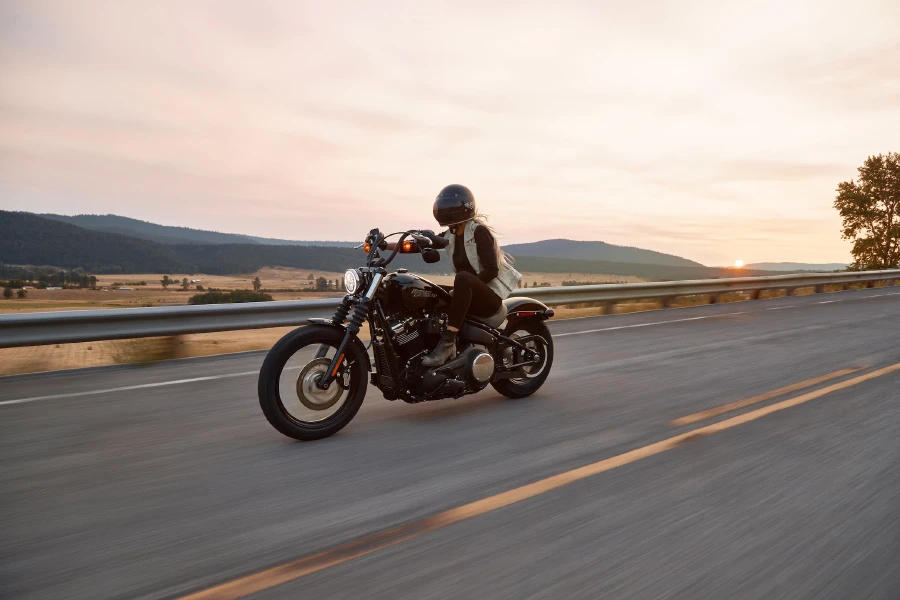
Route 66 is a dream for many.
This is a two week trip split over twelve days with rest stops and achievable riding lengths.
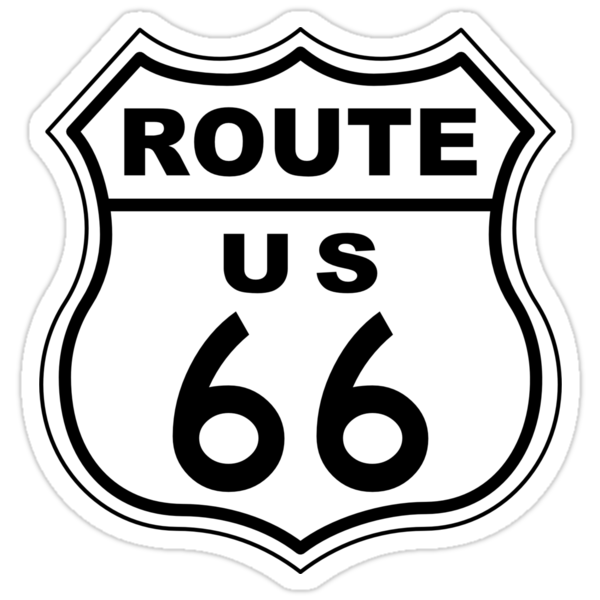
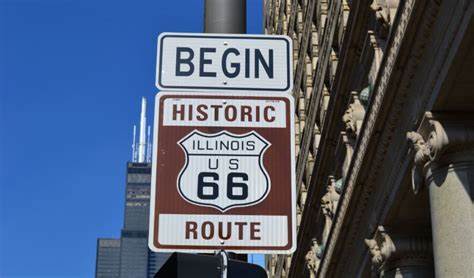
Day 1, Chicago to Springfield (240 miles).

Historic Route 66, through the corn belt of Illinois, follow the Pontiac Trail, as Route 66 used to be known here, to the state capital, Springfield.
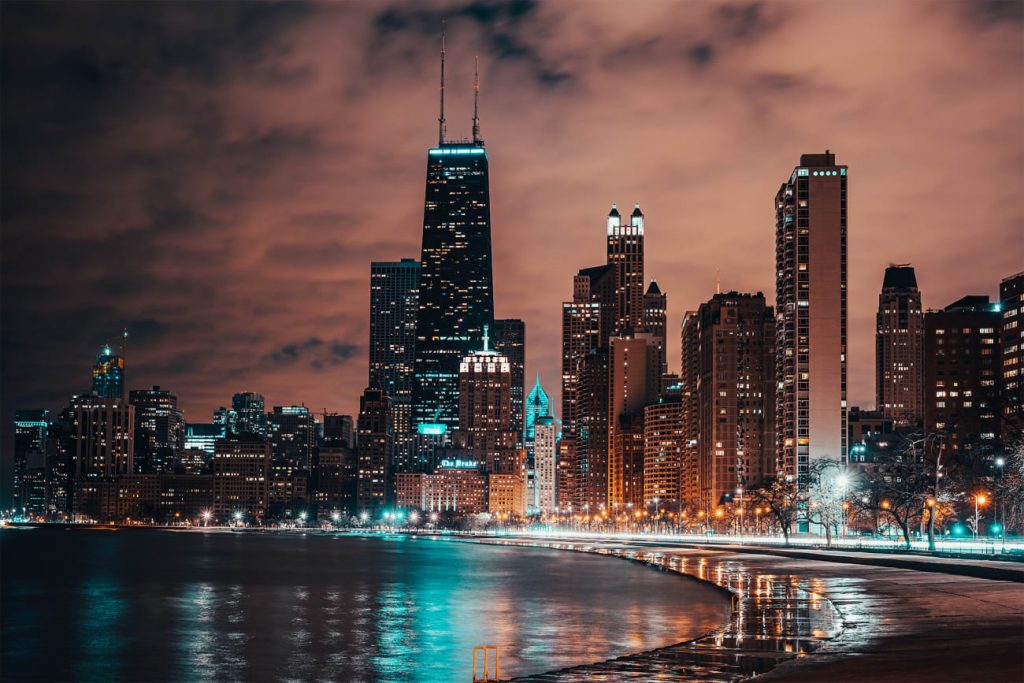
Chicago. Located on the shore of Lake Michigan, Chicago was incorporated as a city in 1837 near a portage between the Great Lakes and the Mississippi River watershed. It grew rapidly in the mid-19th century. In 1871, the Great Chicago Fire destroyed several square miles and left more than 100,000 homeless, but Chicago’s population continued to grow. Chicago made noted contributions to urban planning and architecture, such as the Chicago School, the development of the City Beautiful movement, and the steel-framed skyscraper.
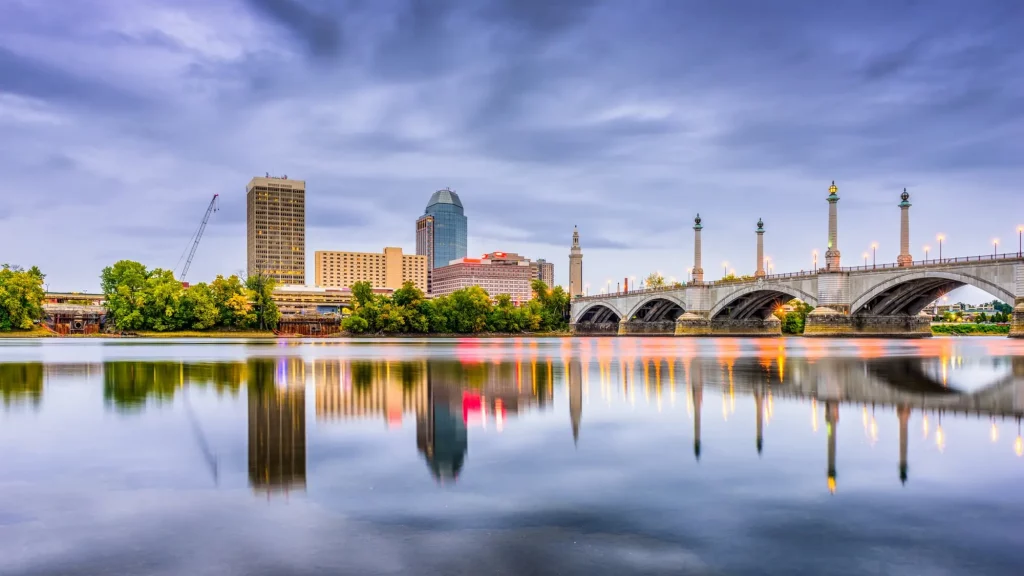
Springfield is the capital city of the U.S. state of Illinois and the seat of Sangamon County. Springfield lies in a plain near the Sangamon River north of Lake Springfield. The city is on historic Route 66.
Day 2, Springfield to Rolla (230 miles).
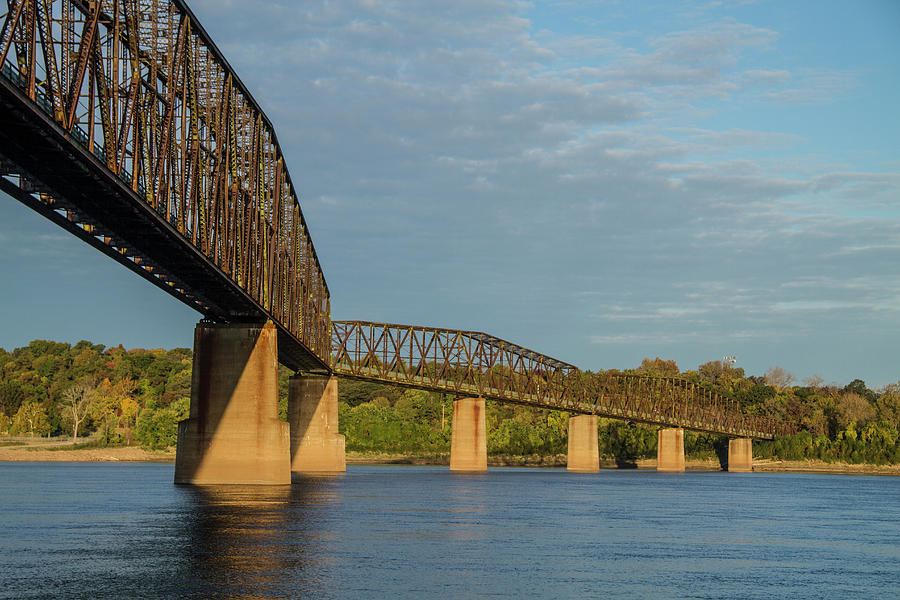
Meandering through small farming towns and countryside until you reach the border between Illinois and Missouri: the Mississippi river. Chain of Rocks Bridge which became a part of original Route 66 in 1936. Missouri Route 66 State Park, and then visit Jesse James’ hideout at Meramec Caverns. Finally, arrive in Rolla.
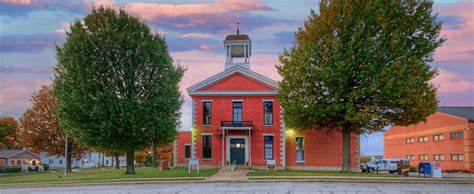
Rolla is a city in, and the county seat of, Phelps County, Missouri, United States. It is approximately midway between St. Louis and Springfield. It is the home of the Missouri University of Science and Technology, well known for its many engineering departments and computer science department.
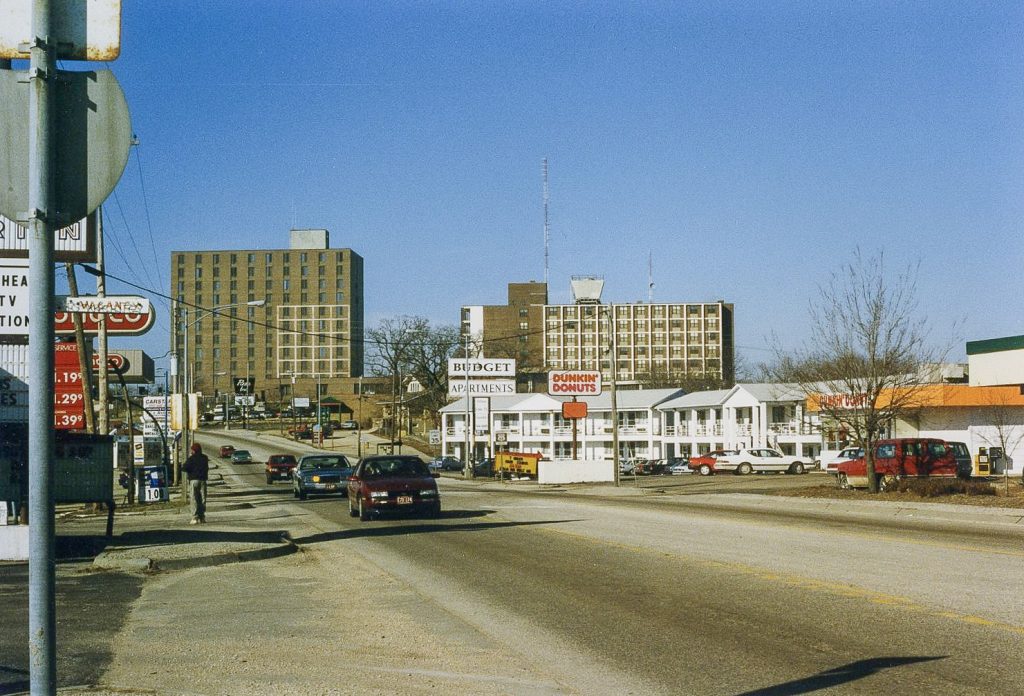
Day 3, Rolla to Tulsa (320 miles).
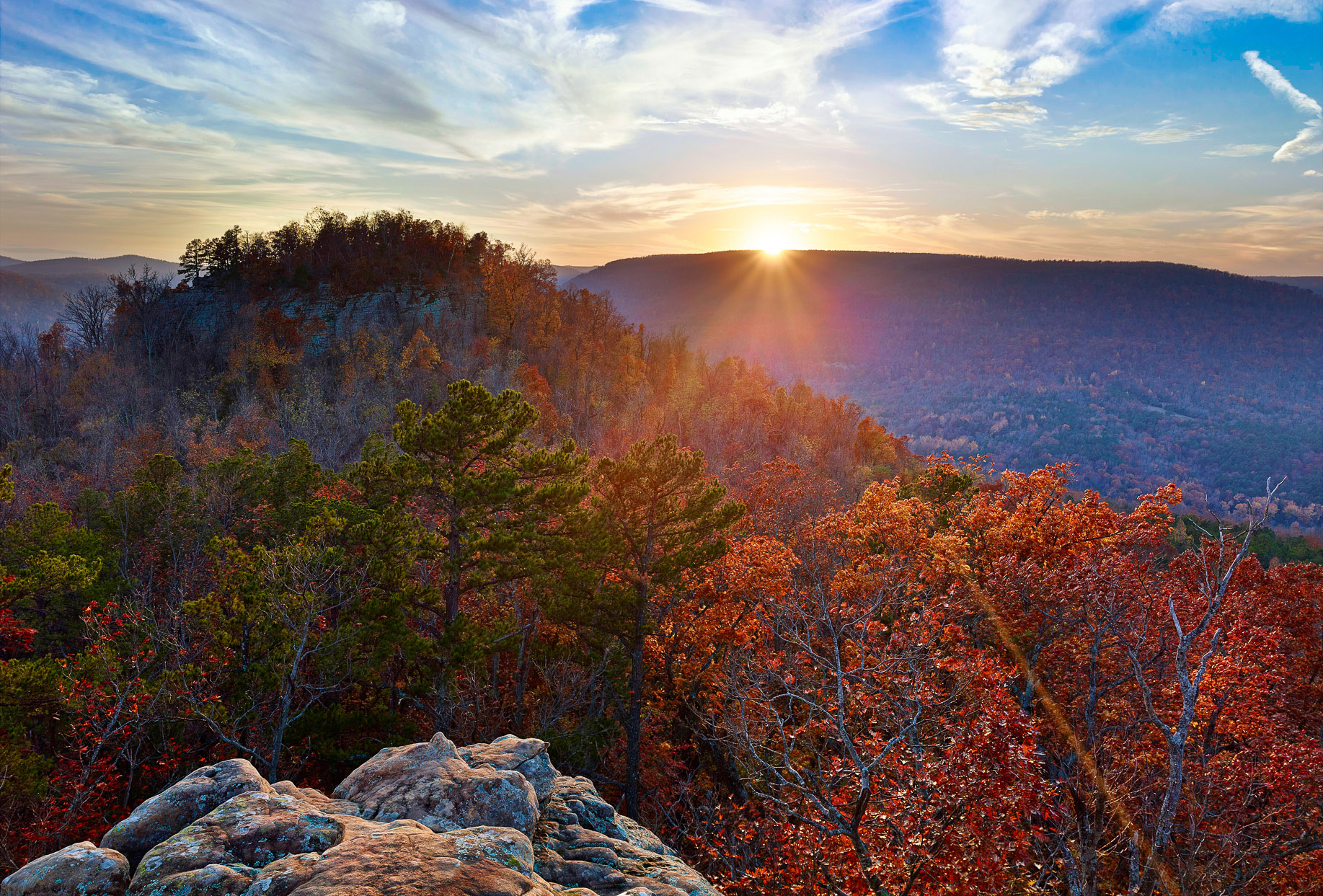
Head into the rolling hills of the Ozarks through (another) Springfield, Joplin and Carthage until we reach Kansas. This was frontier country for much of the 19th century, and although the mountains aren’t high, the road switches, dips, and climbs providing great views of the steep hillsides of oak, elm, hickory and redbud. After less than 20 miles of Kansas ride into the beautiful scenery of eastern Oklahoma and our destination, the oil city of Tulsa.
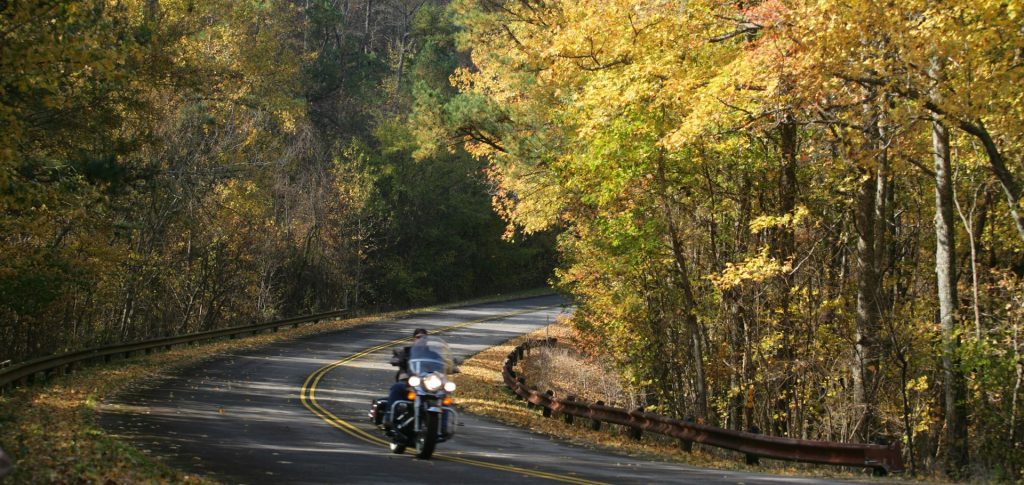
Tulsa is the second-most-populous city in the state of Oklahoma, after Oklahoma City, and the 48th-most-populous city in the United States.
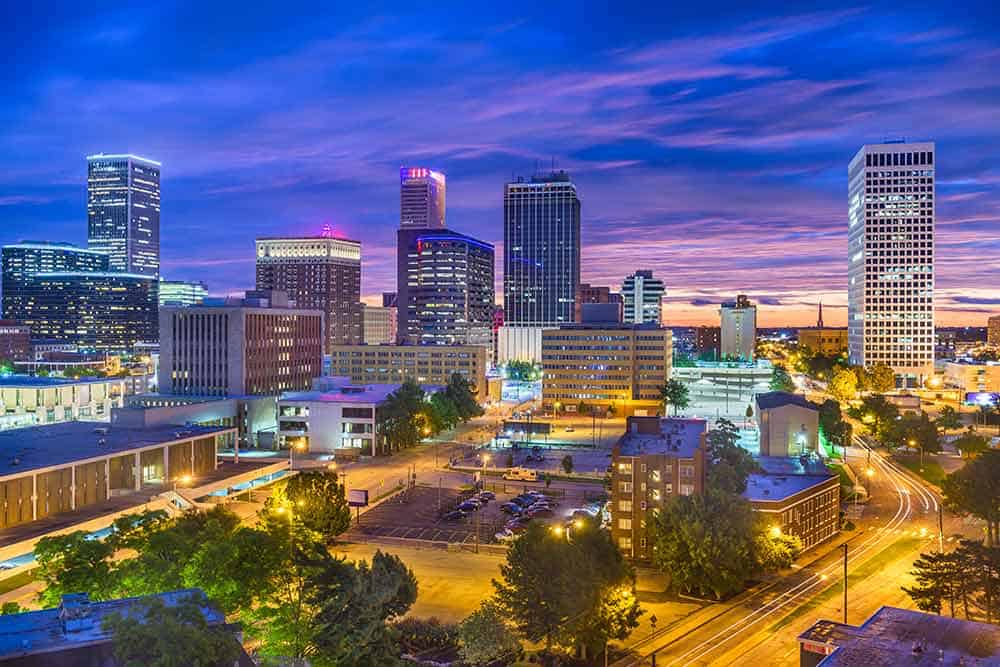
The city serves as the county seat of Tulsa County, the most densely populated county in Oklahoma, urban development extending into Osage, Rogers and Wagoner counties. Tulsa was settled between 1828 and 1836 by the Lochapoka Band of Creek Native American tribe and most of Tulsa is still part of the territory of the Muscogee (Creek) Nation. Historically, a robust energy sector fueled Tulsa’s economy; however, today the city has diversified and leading sectors include finance, aviation, telecommunications and technology.
Day 4, Tulsa to Weatherford (190 miles).
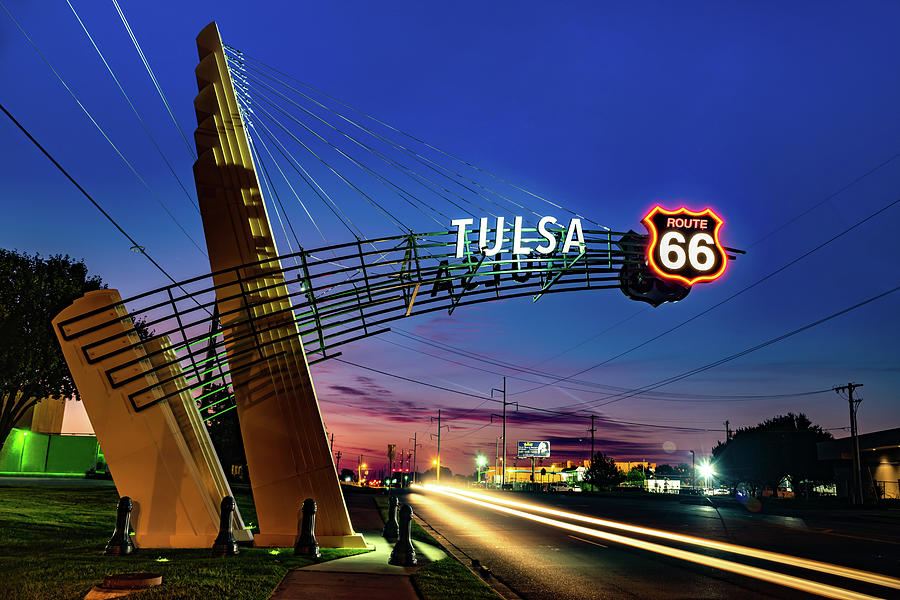
Head towards western Oklahoma and its wide-open spaces this morning. Oklahoma has more miles of Route 66 than any other state, and in better condition! So it’s a real mecca for bikers and old-road fans alike. The majority of the day is spent riding the ‘Old 66’ through pastures and prairie. Stop at the Route 66 Interpretive Centre in Chandler, the Round Barn in Arcadia and ride the longest remaining stretch of the original 1928 -1935 alignment of the route. Further west ride through El Reno, over the mile-long pony-truss bridge near Hydro
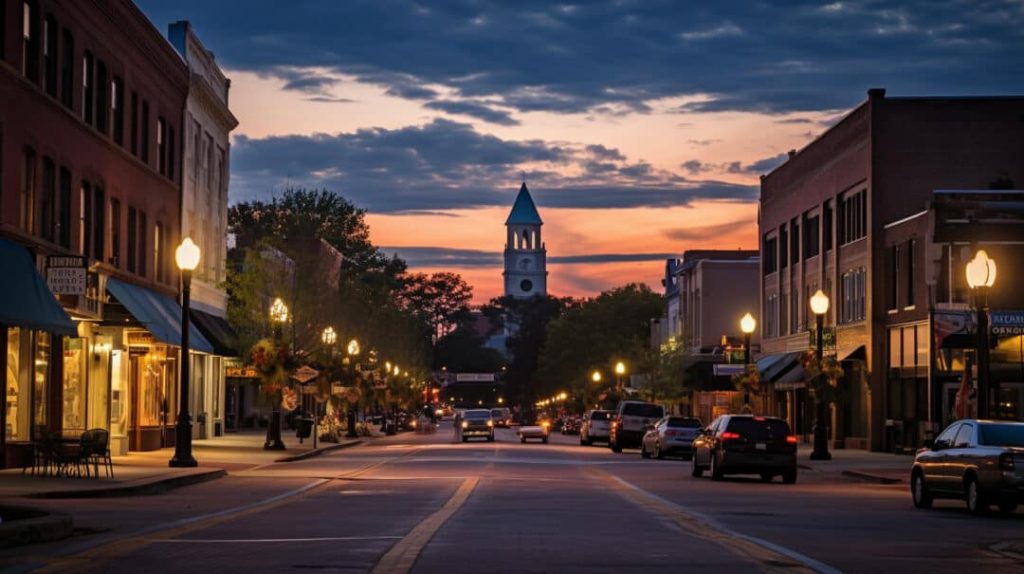
Weatherford is a city in Custer County, Oklahoma, United States. Situated on land made available to homesteaders as part of the Cheyenne-Arapaho Roundup and Removal on April 19, 1892, Weatherford was incorporated on August 3, 1898, on a townsite location chosen by banking and civic leader Beeks Erick.
Day 5, Weatherford to Amarillo (200 miles).
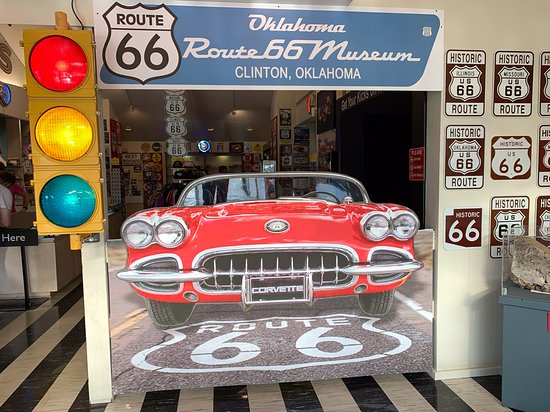
Start today at the Route 66 museum in Clinton, where you can learn more about the route and its importance in American history and do some souvenir shopping. Then back on the road, passing through great plains, vast cattle ranches and small farming towns as we enter the Texas panhandle. Stop off at the beautiful U-Drop Inn in Shamrock, featured in the film ‘Cars’ as Ramone’s Body Shop.
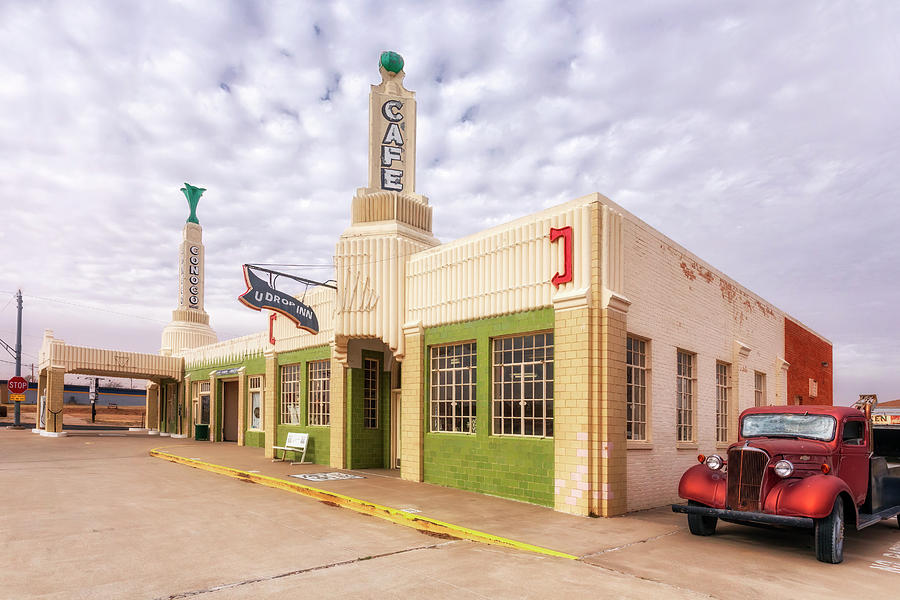
Amarillo is a city in the U.S. state of Texas and the county seat of Potter County. It is the 16th-most populous city in Texas and the most populous city in the Texas panhandle.
The city of Amarillo, originally named Oneida, is situated in the Llano Estacado region

Day 6, Amarillo to Santa Fe (300 miles).
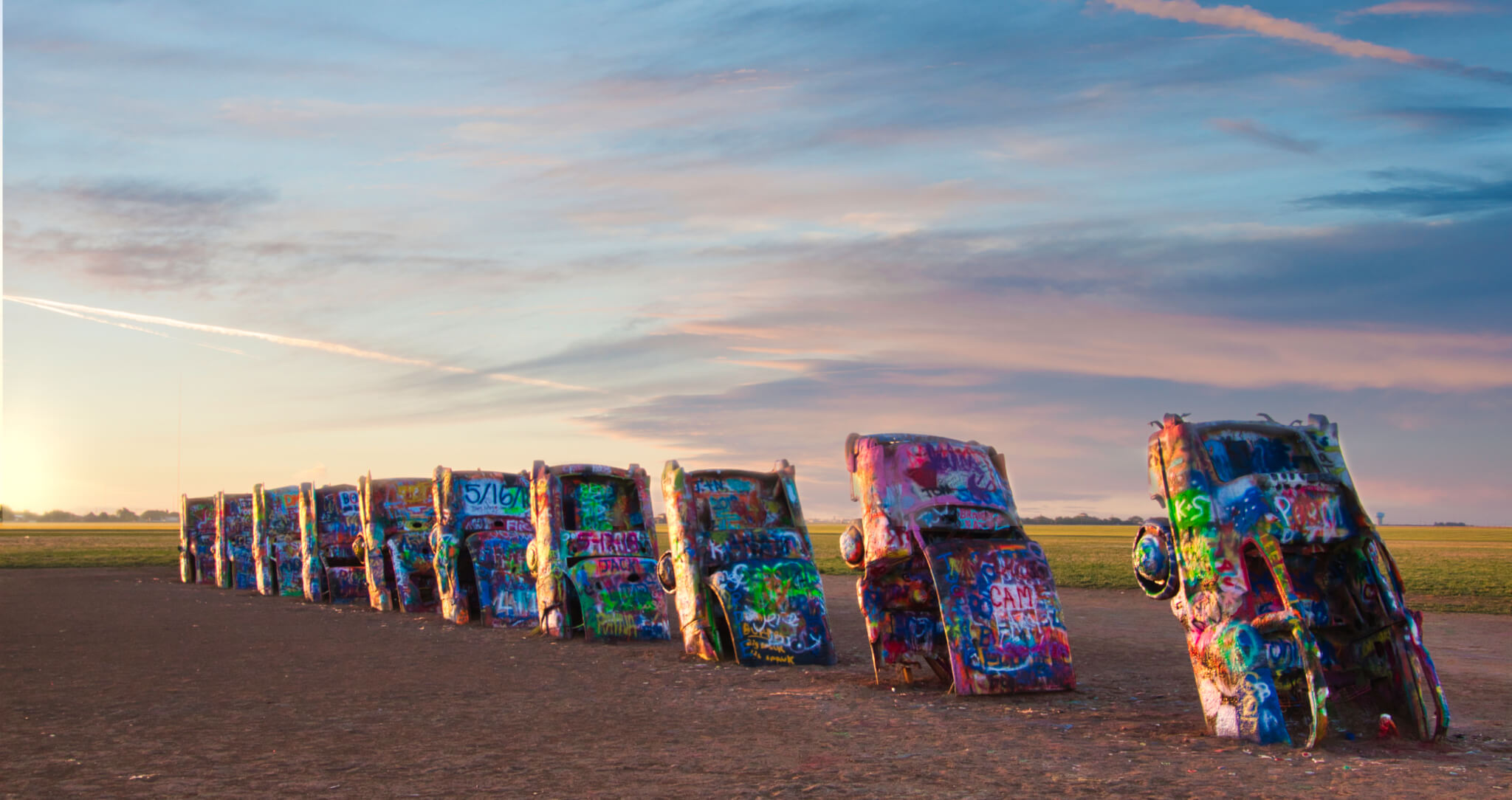
First stop, the Cadillac Ranch: a crazy farmer planted Cadillacs in his field, hoping to grow new ones – guess what?!
Then it’s off to Adrian, we leave the great plains behind and head into the natural splendour of the southwest. Riding through the wide-open spaces and into the Rocky Mountains, we arrive in the beautiful city of Santa Fe.
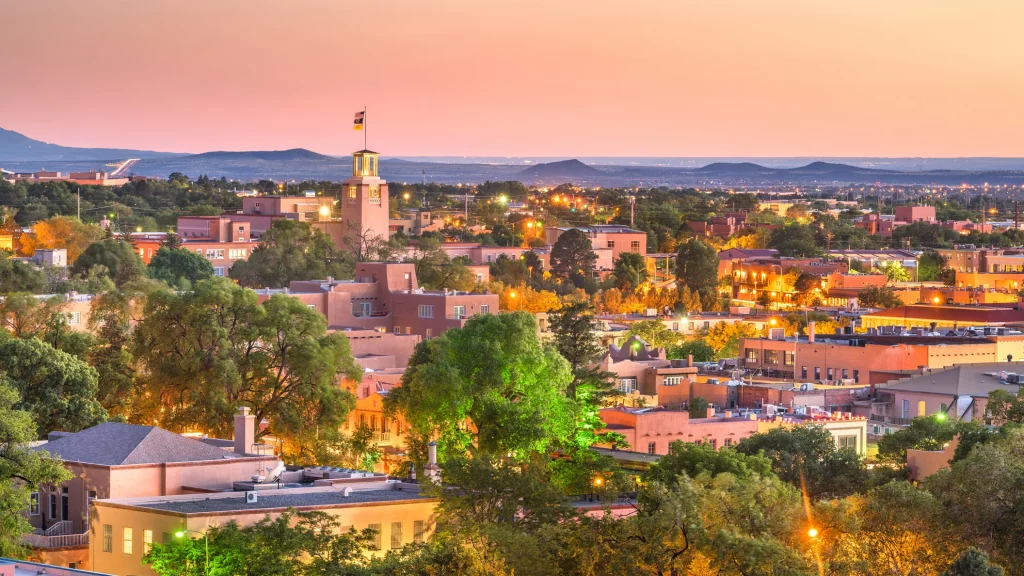
Santa Fe is the capital of the U.S. state of New Mexico, and the county seat of Santa Fe County. Situated at the foothills of the Sangre de Cristo Mountains, the city is at the highest altitude of any U.S. state capital, with an elevation of 6,998 feet (2,133 m). Founded in 1610 as the capital of Nuevo México, a province of New Spain, Santa Fe is the oldest state capital in the United States and the earliest European settlement west of the Mississippi River.
Day 7, Santa Fe to Gallup (225 miles).
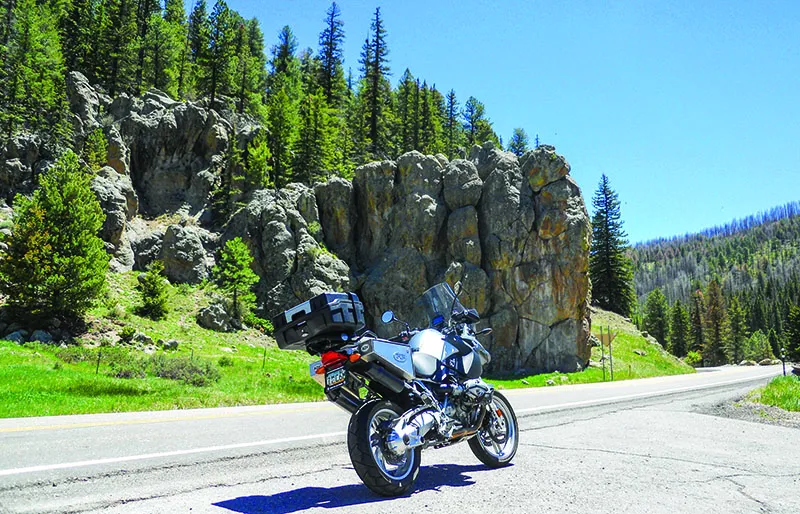
Back on the road and out into the deserts of the southwest, to Albuquerque Old Town. Then head on through the splendour of New Mexico’s natural beauty, ending the day in the old railroad town and Native American stronghold of Gallup.
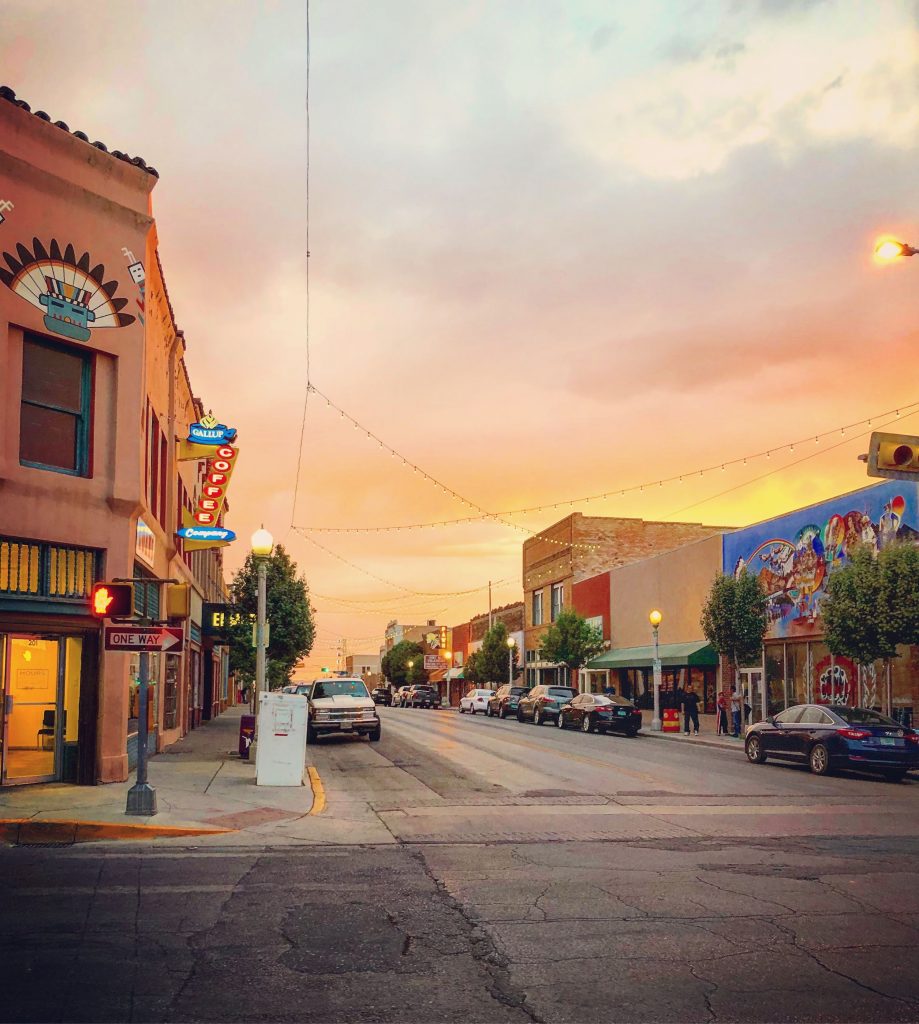
Gallup is a city in McKinley County, New Mexico, United States. A substantial percentage of its population is Native American, with residents from the Navajo, Hopi, and Zuni tribes. Gallup is the county seat of McKinley County and the most populous city between Flagstaff and Albuquerque, along historic U.S. Route 66.
Gallup is known as the “Heart of Indian Country” because it is on the edge of the Navajo reservation and is home to members of many other tribes, as well.
The city is on the Trails of the Ancients Byway, one of the designated New Mexico Scenic Byways.
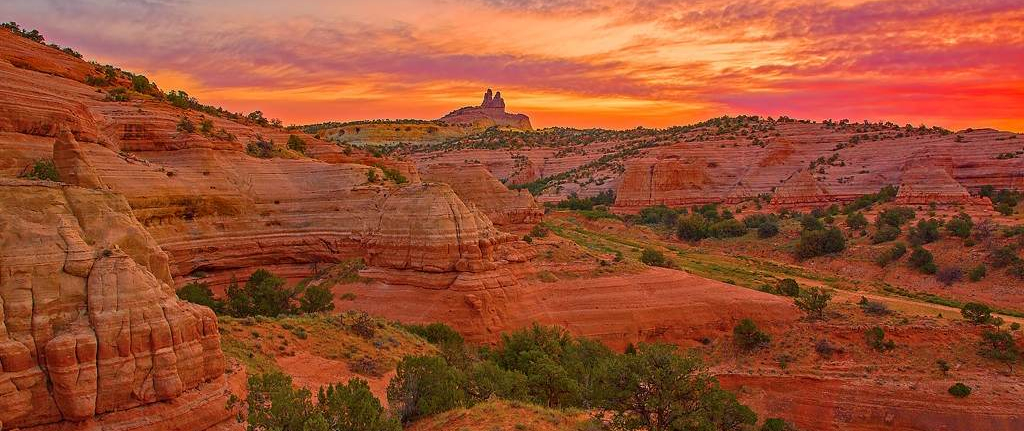
Day 8, Gallup to Williams (240 miles).
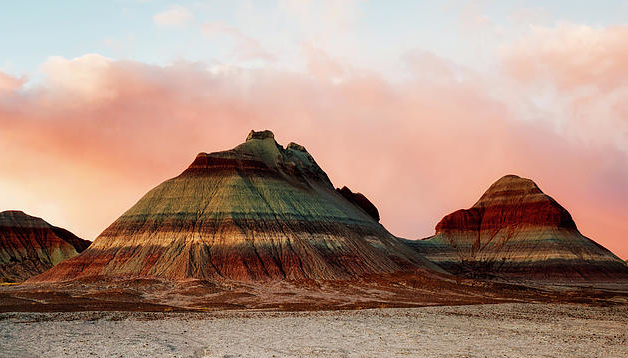
Arizona’s spectacular deserts. Painted Desert & Petrified Forest National Park, where we advise to take your time riding through the park, stopping to take in its natural beauty. Then it’s time to ‘Take it Easy’ with the Eagles, standing on the corner in Winslow Arizona, before continuing to Williams, the last Route 66 Town to be passed by Interstate 40 and gateway to the Grand Canyon.
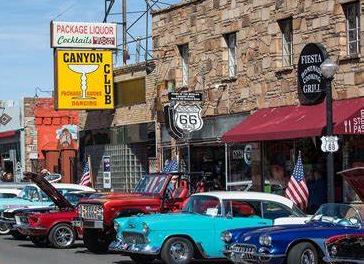
Williams is a city in Coconino County, Arizona, United States, located west of Flagstaff. It lies on the routes of Historic Route 66 and Interstate 40. It is also the southern terminus of the Grand Canyon Railway, which takes visitors to Grand Canyon Village.
Also known as the “Gateway to the Grand Canyon”, Williams was the last city on Historic Route 66 to be bypassed by Interstate 40.
Day 9, Williams and the Grand Canyon (120 miles).
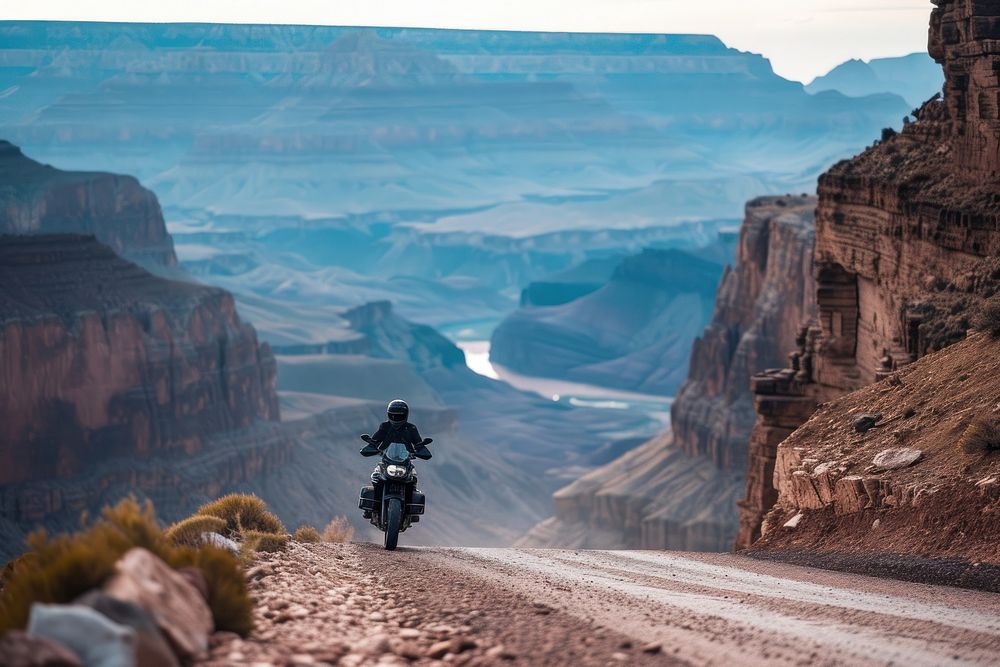
The Grand Canyon is a steep sided canyon carved by the Colorado River in Arizona, United States. The Grand Canyon is 277 miles (446 km) long, up to 18 miles (29 km) wide and attains a depth of over a mile (6,093 feet or 1,857 meters).
The Grand Canyon is 60 miles each way from Williams.

Day 10, Williams to Needles (250 miles).
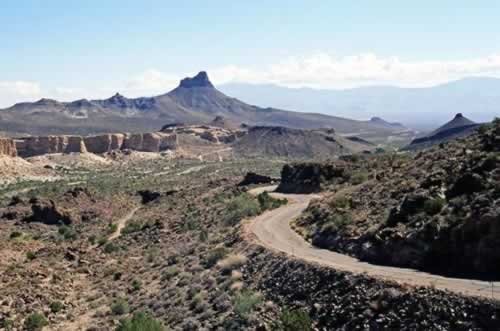
Start the day by riding to the small town of Seligman for breakfast and give yourself some time for shopping at its many Route 66 shops. Then off to Hackberry and then Kingman, the self-styled ‘Capital of Route 66’. Next comes what Americans like to call the ‘curviest’ part of the Route, the Oatman Highway, a twisting ride over the Black Mountains. And then we reach the Colorado River, California and Needles, our next historic Route 66 town.
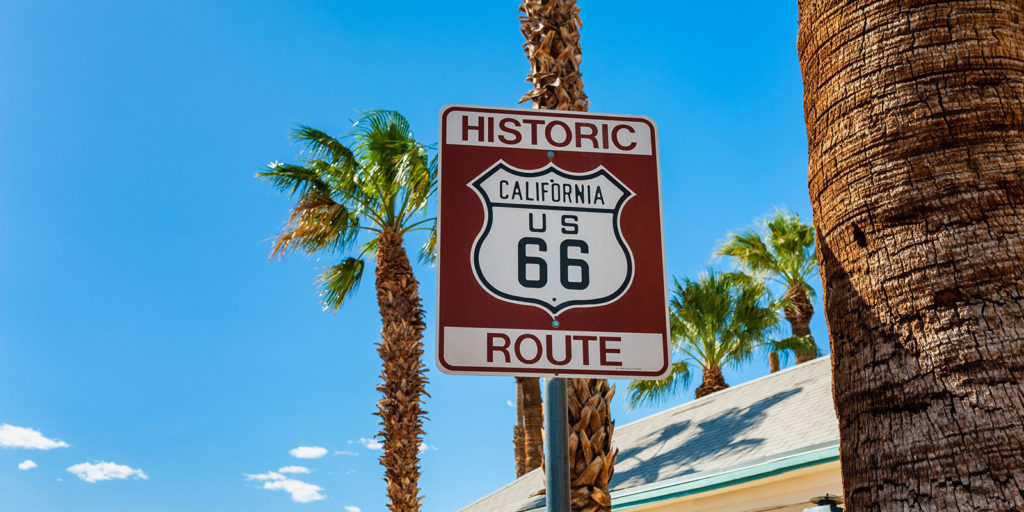
Needles is a city in eastern San Bernardino County, California, in the Mojave Desert region of Southern California. Situated on the western banks of the Colorado River, Needles is located near the California border with Arizona and Nevada. The city is accessible via Interstate 40 and U.S. Route 95.

Day 11, Needles to Victorville (175 miles).
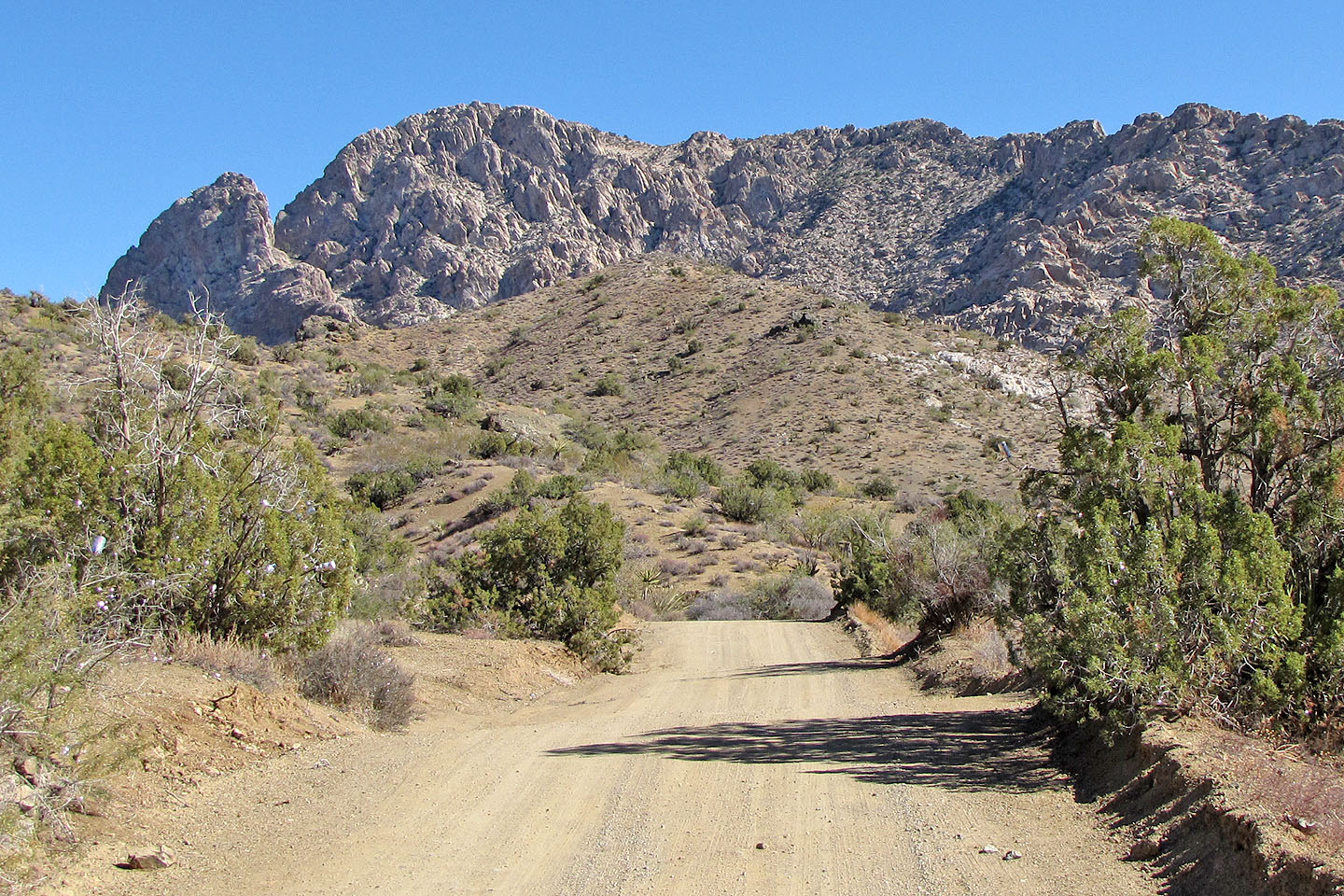
Start the day by riding over the Spirit Mountains into the dramatic, desolate and hot Mojave Desert, stopping in Amboy, located in the middle of nowhere, to check out iconic Roy’s Motel and Café. Continue to Barstow and then on to Victorville.
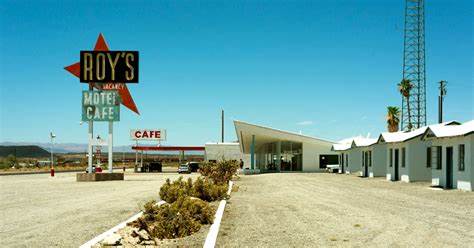
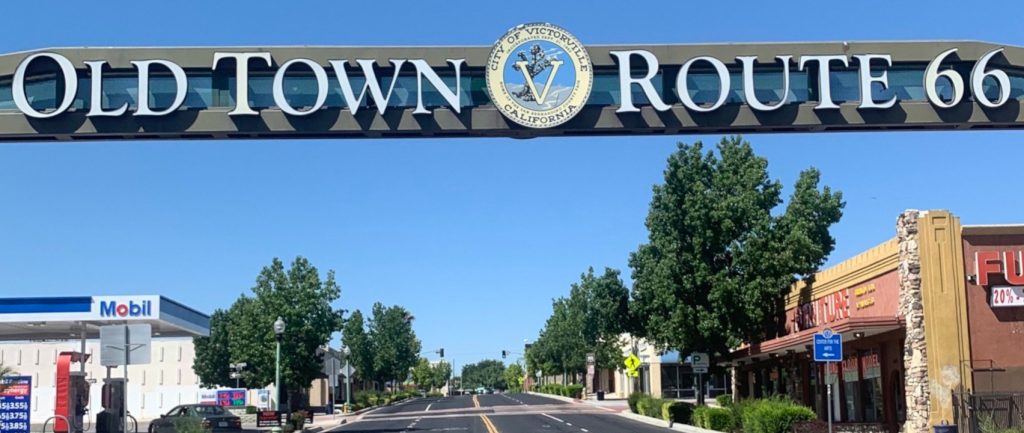
Victorville is a city in Victor Valley in San Bernardino County, California.
Day 12, Victorville to Los Angeles (140 miles).
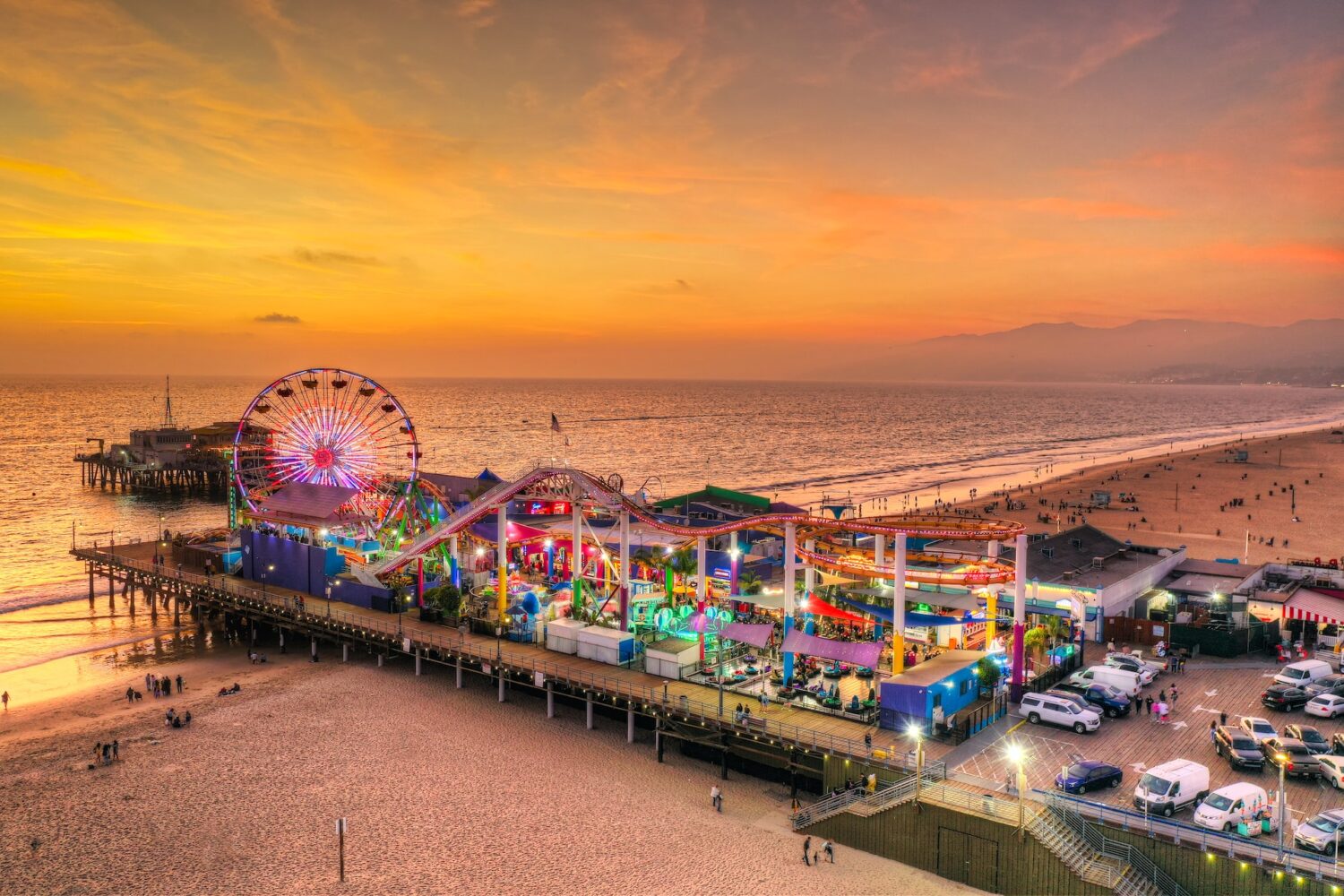
The big adventure comes to an end today with the ride to Los Angeles. Much of the road has been lost, but the end of the Mother Road, Santa Monica Pier, is worth the wait. Park up the bike and dip your toes in the Pacific Ocean, this really is journey’s end!
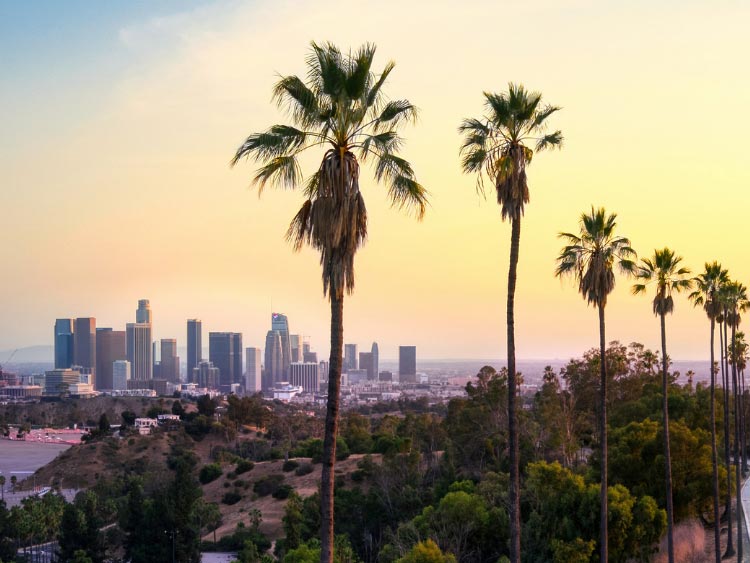
Los Angeles, is the most populous city in the U.S. state of California it is the second-most populous city in the United States, behind only New York City; it is also the commercial, financial and cultural centre of Southern California. Los Angeles has an ethnically and culturally diverse population.
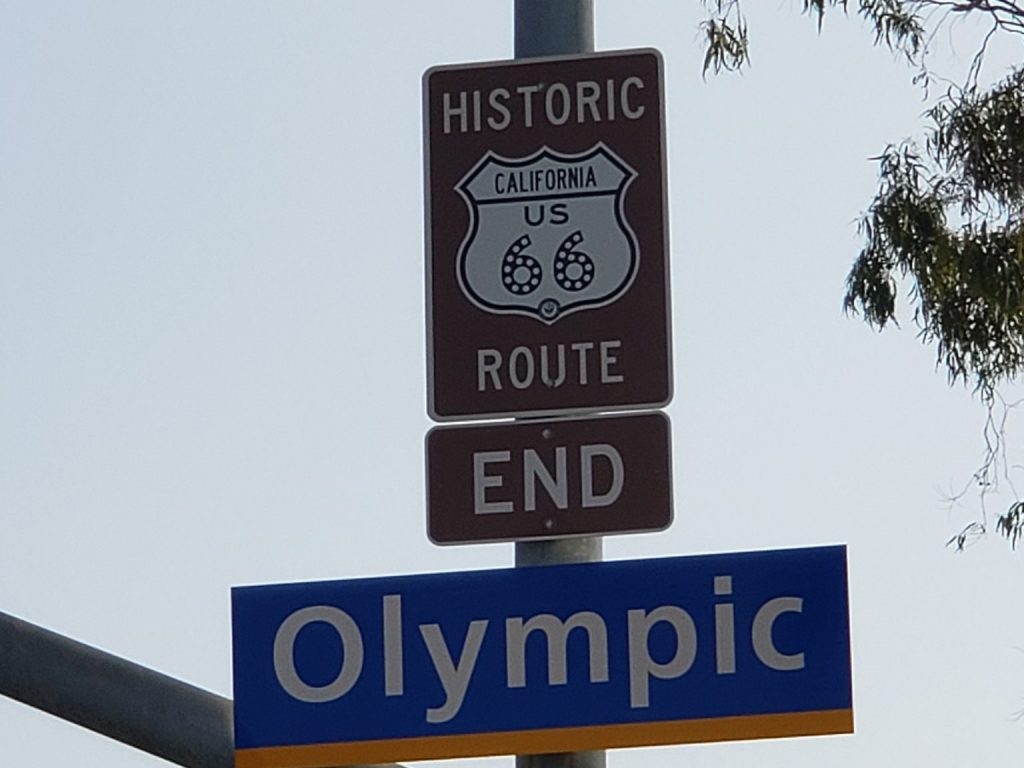
Route 66 museums.
A Route 66 museum is a museum devoted primarily to the history of U.S. Route 66, a U.S. Highway which served the states of California, Arizona, New Mexico, Texas, Oklahoma, Kansas, Missouri, and Illinois, in the United States from 1926 until it was bypassed by the Interstate highway system and ultimately decommissioned in June 1985.
In many towns and US states on the former highway, the initial efforts to establish museums to preserve the road’s history were led by individual state-level Route 66 associations or local groups.
As each museum is an independent entity, their content varies widely; some cover one state or region, while others cover the entire eight-state route, and many extend to related topics varying from the pre-highway transportation history of a state to the Dust Bowl exodus of the Great Depression, the mobilization of soldiers and equipment for World War II or nostalgia for the post-war highway and classic cars of that era.
Arizona Route 66 Museum
The Arizona Route 66 Museum opened in Kingman, Arizona on September 29, 2001 during Andy Devine Days. The museum, located in the Powerhouse Visitor Centre, formerly the Desert Power & Water Co. Electric Power Plant, depicts the historical evolution of travel along the 35th parallel that became Route 66.
Berwyn Route 66 Museum
The Berwyn Route 66 Museum, which moved to a retail storefront in Berwyn, Illinois in 2011 from a now-defunct Ford dealership, was home to the Berwyn Arts Council gallery and as of 2012 is attempting to rebuild Berwyn’s Spindle sculpture, dismantled in 2008.
California Route 66 Museum
The California Route 66 Museum, established in 1995 at the former Red Rooster Café building in Victorville, is one of two museums in the state devoted to the history of Route 66 (California also has a Mother Road museum in Barstow). This museum focuses on the westernmost portion of the historic highway.
Chandler Route 66 Interpretive Centre
One of three Route 66 museums in Oklahoma (others exist in Clinton and Elk City), the Chandler Route 66 Interpretive Centre occupies the historic Chandler Armory (1935–1971), originally built by the Depression-era Works Progress Administration.
Route 66 Association of Illinois Hall of Fame and Museum
The Route 66 Association of Illinois Hall of Fame and Museum in Pontiac, Illinois was originally established by the Illinois Route 66 association at the Dixie Truckers Home on the former US Route 66 (now Interstate 55 in Illinois), relocated in June 2004 to early-1900s fire hall, and is now located in the former Pontiac City Hall and Fire Station, now known as the Pontiac Museum Complex. Its collections include the vehicles of late Route 66 travelling artist and cartographer Bob Waldmire, on whom the Cars character “Fillmore” is based.
Litchfield Museum
The former “Vic Suhling Gas for Less” filling station site at 334 Historic Old Route 66 North in Litchfield, Illinois was redeveloped and opened in 2013 as the Litchfield Museum and Route 66 Welcome Centre. Local history displays include “The Indian Connection,” “Railroad History,” “Historic Downtown Businesses,” “Agriculture and Farming,” and “Illinois Route 66” complete with a mural by late Route 66 artist Bob Waldmire which was relocated from the Dixie Truckers Home.
A 2013 matching grant from the Route 66 Corridor Preservation Program will fund restoration of the historic filling station signage.
National Route 66 Museum
The National Route 66 Museum forms part of an Old Town Museum Complex in Elk City, Oklahoma, which includes several museums on various topics. This museum covers the entire eight-state route, incorporating an interactive ride in a 1959 Cadillac.
New Mexico Route 66 Museum
The New Mexico Route 66 Museum is located in Tucumcari, New Mexico behind the local convention centre.
A competing proposal from another group advocated a Route 66 museum be established in the historic Ilfeld Warehouse near downtown Santa Rosa, New Mexico.
Oklahoma Route 66 Museum
The Oklahoma Route 66 Museum in Clinton, Oklahoma, covers the history of Route 66 from Chicago, Illinois to Santa, Monica, California. It is the largest museum dedicated to the history and culture of Route 66, the most famous highway in the World. The museum also offers changing special exhibits, focusing on the Route 66 experience in the Now and Future Gallery. And don’t forget to step into the gift shop for some Route 66 Memorabilia.
Route 66 Mother Road Museum
One of two museums located in the historic 1911 Casa del Desierto, a former Harvey House Railroad Depot and hotel in Barstow, California, the Barstow Route 66 “Mother Road” Museum opened in 2000. It displays historic vehicles, photographs, artwork and petroliana from Route 66’s heyday.
Route 66 State Park Visitors Centre
The Visitors Center in Missouri’s Route 66 State Park is located in the Bridgehead Inn, a roadhouse constructed in 1928. The Center has permanent displays on Route 66, focusing on Missouri. They also sell books on Route 66 as well as souvenirs. The Visitors Center is next to an historic Route 66 bridge over the Meramec River. The Route 66 State Park itself is on the other side of the bridge, on the former site of the now-ghost town of Times Beach, Missouri.
